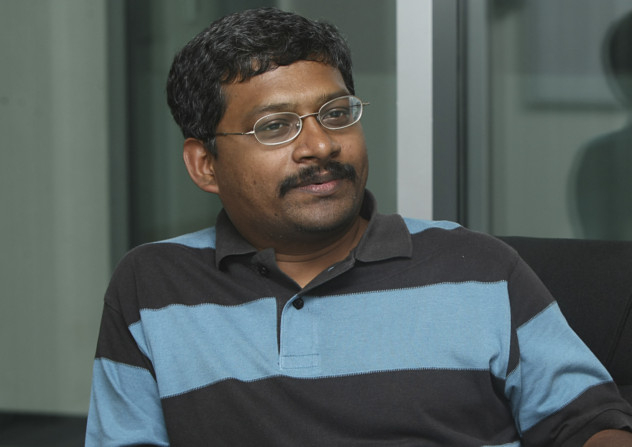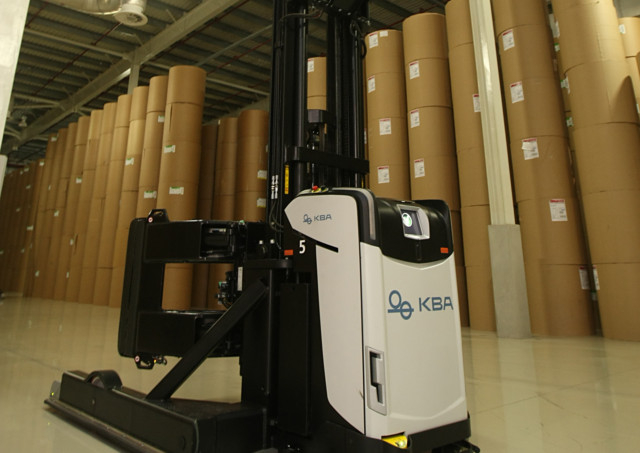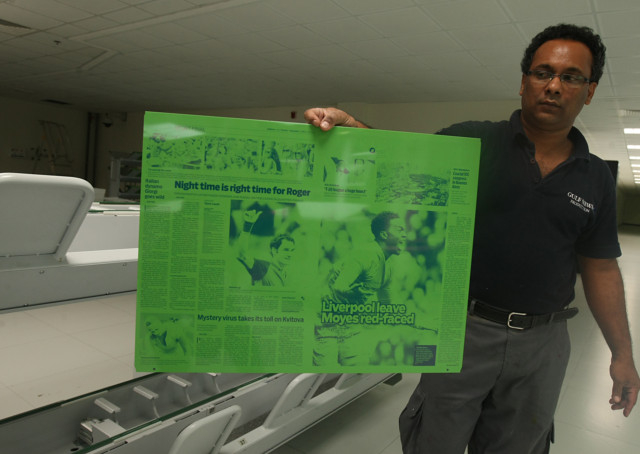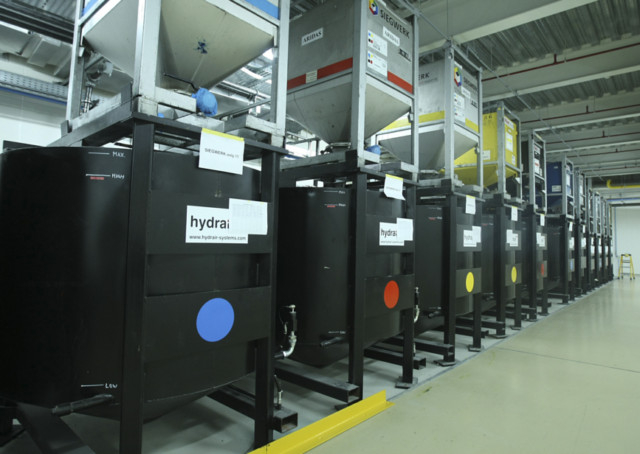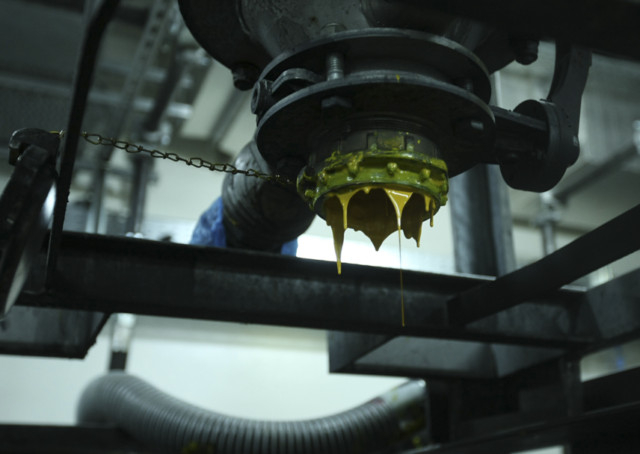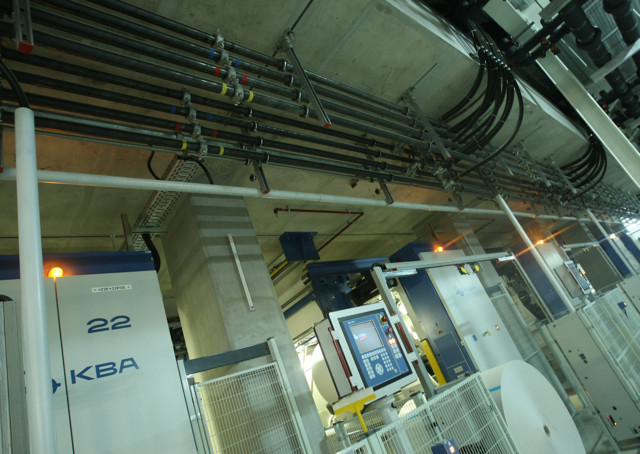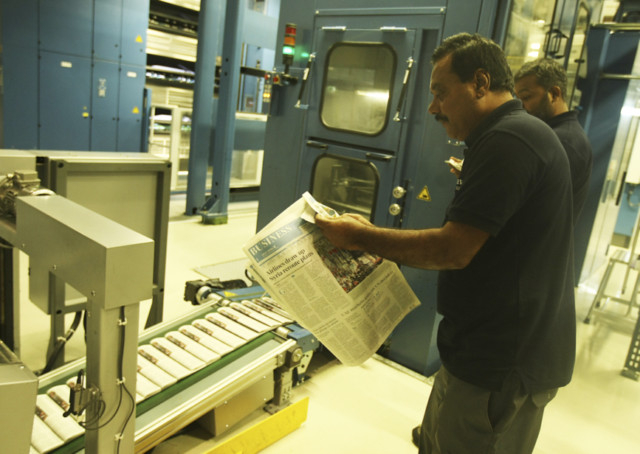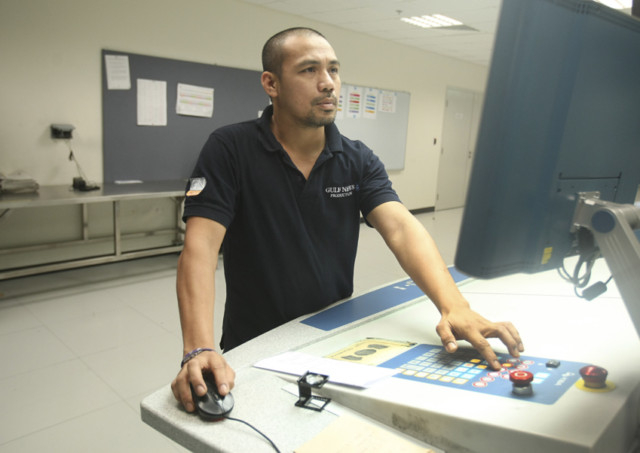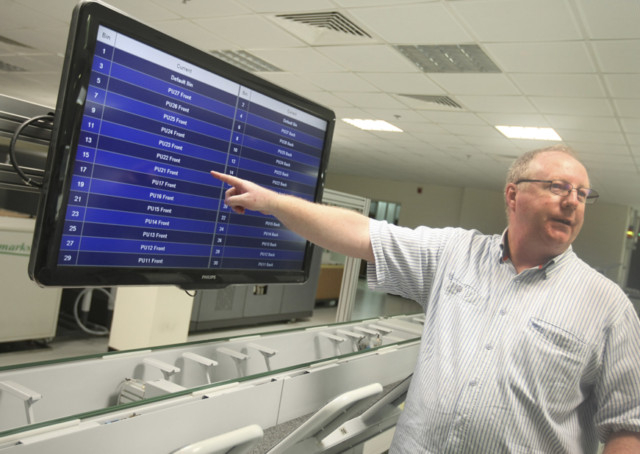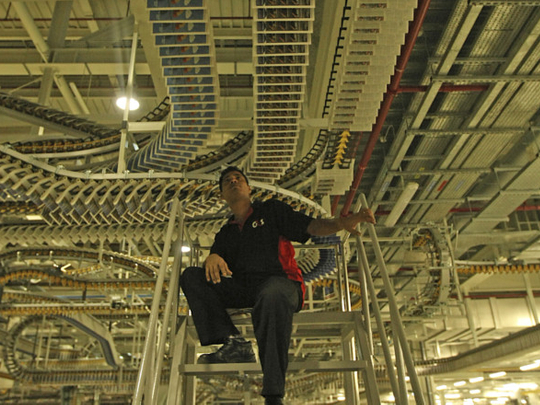
A tour of GN Media’s new state-of-the-art printing centre will leave anyone speechless, even journalists who’ve grown up holding newspapers that leave ink on their hands and who remember old-style rotary letterpress machines. There are none of those at the enormous Dubai Investment Park venue where Gulf News has been printed in Berliner format since June last year. The 50,000-square-metre site, which folds together 108,750 circulation copies of the paper each day (not counting early runs) is a far cry from the offset Hunter printing press where the paper first came to life on September 30, 1978. At the time, 3,000 copies of the paper were distributed.
Our tour starts in the reel store, which can house 9,000 paper rolls at full capacity. This is where we first meet the robots, each looking like a cross between a snowmobile and a washing machine, with a tripod cum flagpole-type arm extending upwards to grab and hoist the reels about. One trundles towards us and instead of jumping out of its path we stand still — and the robot stops just before impact. Officially known as an Automated Guided Vehicle, its work is programmed by a chap somewhere high above us manning a control room (don’t ask me how) but it’s all done automatically using bar codes, cameras and set programming.
“If we want a certain size paper of a particular weight, the robot knows exactly where to find it,” says Michael Condon, Production Manager.
While not particularly endearing, some camaraderie does form between the seven reel hands and the busy robots (10 in total), and as we tour their domain they do start to feel a little like silent friends. The only time the paper is touched by human hands is as it leaves the reel room for the press. The ends are lopped off and outer wrapping removed and sent to a recycling facility on site.
We then move to an area that looks like a section of the United States’ National Aeronautics and Space Administration, where huge vats of black, cyan, magenta and yellow ink are stored. Behind them rocket-like hydraulic machines pump ink into the system.
The press hall houses the brains — the highly-automated Cortina web press. It’s the first installed outside Europe and the only one in the Middle East. German printing press manufacturers Koeing & Baeur Group supplied the multi-unit webfed offset press, which towers up on the mezzanine floor.
Over the past 35 years, Gulf News has been published on printing presses that include the Hunter, an Albert Frankenthal first used in 1986, a Cromoset press in 1993 and a Roland Cromoman in 1999.
It seems fitting that the desert-based publisher should have a waterless press. This offset lithographic printing process does not use the water or dampening system of conventional printing. An inked image is transferred (offset) from a silicone coated printing plate to a rubber blanket, then to the printing surface. The plate’s non-image areas consist of a layer of silicone that repels ink. The inks are sensitive to temperature so this has to be well controlled.
A waterless press minimises waste, gains more flexibility and productivity compared to a conventional web offset press and needs little manual intervention. The detailed definition, uniform print quality and colour brilliance of the waterless offset Cortina are particularly high, according to Alan Finch, Head of Production. “Less paper is wasted during set up for each job plus there is, of course, no wastage of water.”
The press comprises 12 reel stands, 12 printing towers, four thermal dryers and three folders. The main body of the newspaper is produced off one folder, while a pre-print with business and sport sections runs in parallel off the third folder. The second folder is spare.
The press has a total capacity of either 96 full-colour Berliner format broadsheet pages or 192 tabloid pages in A4-plus format. Paper is fed from the reel stands to the press tower where the plates with images are installed. The images transfer to the paper via the plate cylinders, which press against a blanket cylinder, which in turn transfers the ink to the paper.
The Cortina is capable of churning out 80,000 copies an hour (double the output of the Cromoman) but on an average night prints 60,000 to 70,000 copies per hour.
Jude Fernando, Gulf News employee for 17 years, is among the 21 printers at the new press. “We were anticipating a lot of difficulties because this Cortina system is completely new — nobody had ever heard of it before nor worked on silicone plates or with the ink. We thought the training process would last a year,” he says. “However, we were able to learn the system in three months.”
Printing superintendent Noble Rajaih, who joined Gulf News ten years ago, puts this down to the fact that the printers had to be highly skilled to use the earlier manually operated machines so were familiar with some processes.
Advantages at the new press include time-saving and less waste. “With the Cromoman we needed 1½ hours to prepare it for production; now we can complete the same job in half an hour,” says Rajaih. “We used to run about 3,000 copies before we would get a good copy. Now, after 400 copies at most, we get a good print. That makes a major difference to the waste factor,” adds Fernando. >
Rajaih says it’s a complicated process. “We strive to be on time — that is the basic need in the newspaper industry. At the end of the day you get a newspaper, but the effort that everybody has put in, right from the editorial to when it is printed, collated and distributed — we give credit to the whole team involved.”
The night editor is the only person who can yell ‘stop the press’, which happened the day we visited, as the team waited for news of a woman at the Dubai Public Prosecution building claiming to have explosives strapped to her waist.
Usually, at 9.30pm, a printer pushes a big red start button, which sets off a whirr and whoosh of machinery. There’s no rattling, banging or grinding in here.
Chains full of cam grippers take the printed newspapers to the mail room where the operation can only be described as choreography. On a suspension framework metres above us hang armies of folded newspapers, held by cam grippers that go clickety clack, as the pneumatic clamps haul the newspapers on their way.
I could be on the set of a science fiction movie — something like a scene in the Matrix Revolutions. But these machines help rather than hinder progress provided the temperature-controlled system is treated right. Any small interference such as a flash from a camera could upset the apple cart and stop production.
The technology behind opening the folded newspapers and positioning the Gulf News’ inserts, which have been waiting on a huge disk in a type of holding pen, has to be seen to be believed or understood. Swiss technology can take a bow; Zurich-based Ferag printing equipment manufacturers were responsible for designing, developing and manufacturing all the conveyor, storage, processing, bundling and controlling systems of the mailroom plus necessary individual components.
At the end of the mail room a sushi-like automatic conveyor belt system carries the bundles of labelled newspapers, ready-wrapped in individual polythene bags, straight outside into the boots of the awaiting delivery vans, the grand finale in this dance of the printed word.
Print will never be dead — it has just changed, that’s all.




